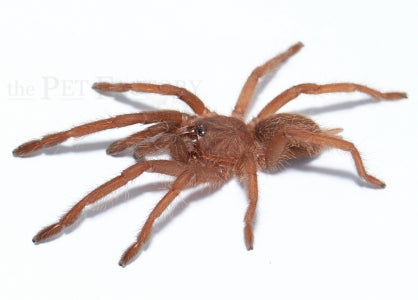
Vietnam Blue Tarantula | Chilobrachys sp. 'Vietnam Blue' (MM)
Live Animals Are Click and Collect Only
Please note that we do not ship live animals. You can order online and collect in store.
The Vietnam Blue Tarantula, scientifically known as Chilobrachys sp. 'Vietnam Blue,' is a striking and captivating arachnid species highly sought after by tarantula enthusiasts. This species is known for its vibrant blue coloration, making it a standout in the world of tarantulas. Originating from Vietnam, these tarantulas are found in various regions of the country, particularly in the forested areas of Northern Vietnam.
Origin: The Vietnam Blue Tarantula, Chilobrachys sp. 'Vietnam Blue,' hails from the forests of Northern Vietnam.
Temperature: Ideal temperatures for keeping this species typically range between 75°F to 85°F (24°C to 29°C). Maintaining a consistent temperature within this range is crucial to ensure the well-being of your Vietnam Blue Tarantula.
Housing: To provide a suitable habitat for your Vietnam Blue Tarantula, it is essential to use an adequately sized enclosure with sufficient substrate for burrowing. A container with good ventilation, such as a secure terrarium or plastic enclosure, is recommended. Provide a hide for the tarantula to retreat to, as well as a shallow water dish for hydration. Maintain a humidity level of around 70% to mimic their natural environment.
Feeding: Vietnam Blue Tarantulas are carnivorous and primarily feed on a diet of insects such as crickets, roaches, and mealworms. Offer appropriately-sized prey items once or twice a week, adjusting the frequency based on the tarantula's age and appetite. Make sure the prey is smaller than the tarantula's body to prevent injury.
Lifespan: These tarantulas have a relatively long lifespan, with females living up to 15 years or more if properly cared for. Males, on the other hand, have a shorter lifespan of around 3 to 5 years, often due to their limited life span after maturation.
Behavior and Personality: Vietnam Blue Tarantulas are known for their semi-aggressive behavior. They can be skittish and may exhibit defensive postures when provoked. While not typically recommended for handling due to their speed and potential for aggression, they are fascinating to observe in their enclosures. Their striking blue coloration and intricate web-building behaviors make them a unique and captivating species to keep.
Please note: We don't ship live animals. You can order online and choose click and collect, and we will hold it for you.
















